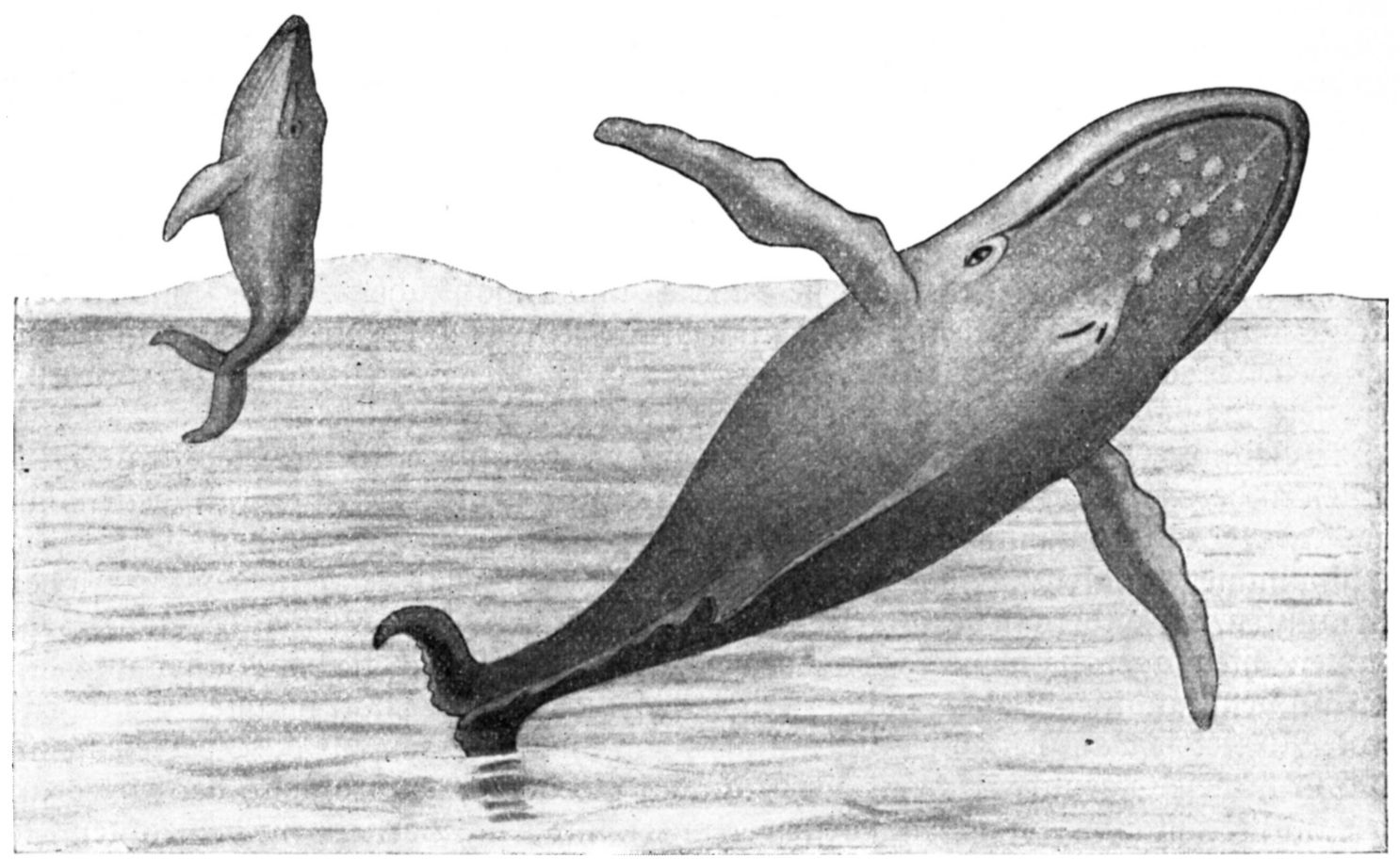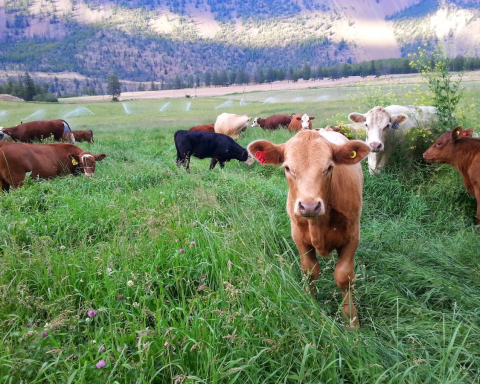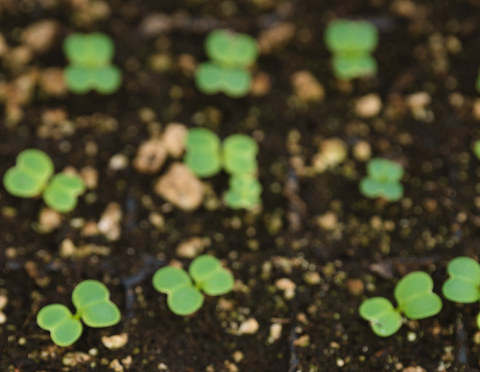A Whale of a Story
Marjorie Harris
Excerpt from the BC Certified Organic Program
Operators Manual:
1.4 Principles of Organic Farming
2) To interact in a constructive and life-enhancing way with natural systems and cycles.
5) To develop a valuable and sustainable aquatic ecosystem.
8) To promote the healthy use and proper care of water, water resources and all life therein.
The Oceans of Life
Our planet’s web of life is inextricably linked to the mineral- and nutrient-rich oceans that cover 71% of our Earth’s surface and hold 96.5% of all the water, yet it is said that we know more about space than about the great abundance of life in our oceans. We are only just discovering how the multitudes of complex food webs on land are completely dependent on the ocean’s abundance for nourishment. The oceans provide the oxygen we breathe, the rain we need, the minerals and nutrients we grow with, the climate temperatures we live in, and more. And the oceans are home to the planet’s keystone species, the whales.
Every ecosystem has a keystone organism that helps to define the entire ecosystem, without which the ecosystem would be dramatically different or cease to exist altogether. Blue whales are the largest of the whale family, and the largest animals that have ever existed on Earth. Whales as a group define the ocean ecosystems by “the whale pump,” a cycle that circulates nutrients that support the ocean’s food webs and ultimately deliver nutrients to land. The whales are irreplaceable. If lost, the web of life as we know it would likely cease to exist.
Aquaculture has joined the organic family of organic standards; therefore, it is prudent to understand the breath and scope of how the ocean ecosystems underpin our very existence on land, so that we can be good stewards of our water world.
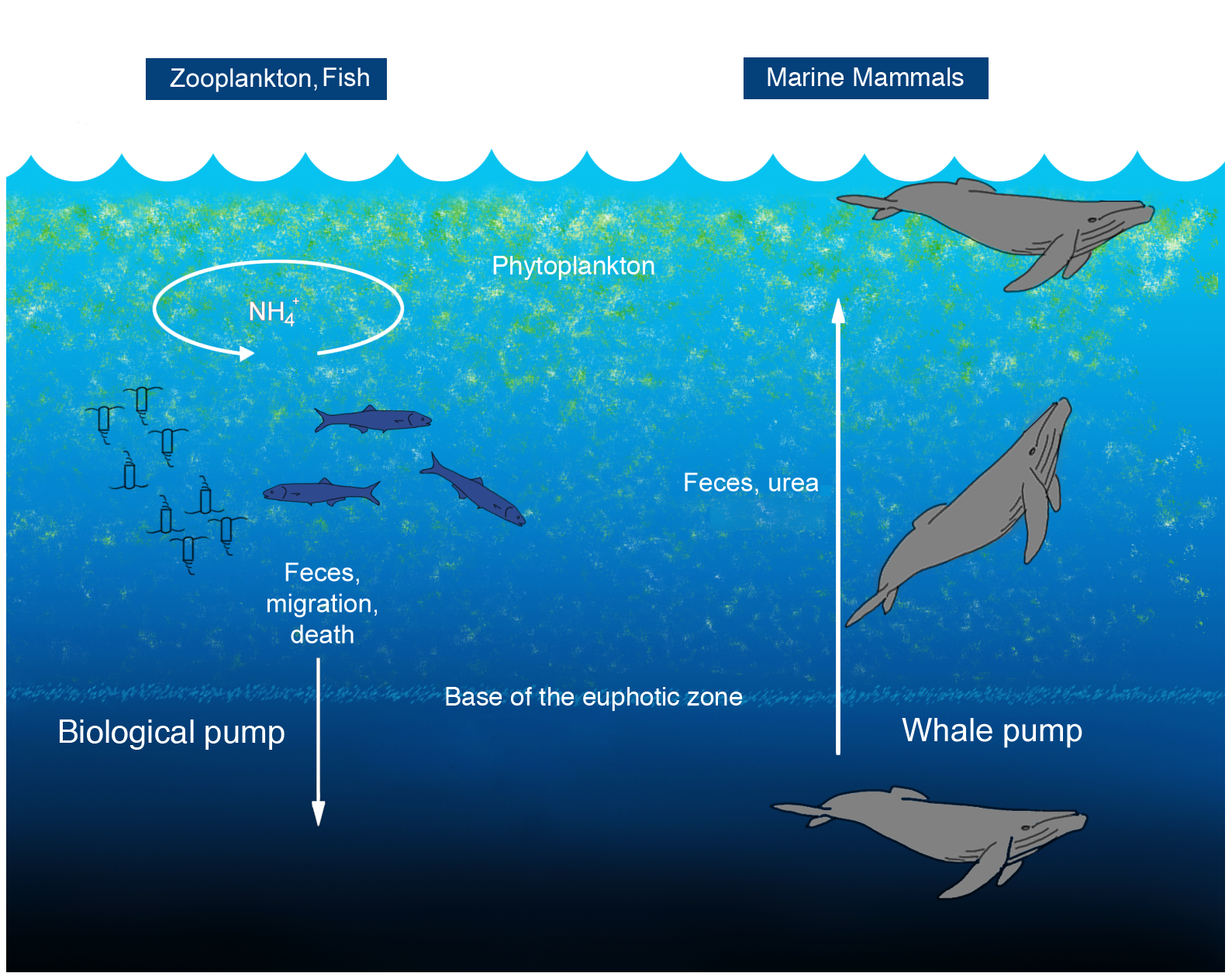
The Whale Pump
Whales release copious amounts of nutrient-rich liquid feces, which floats, suspending dissolved nutrient particles in the sunlit surface waters. Whales circulate 24% of the ocean’s iron; these iron-rich plumes of fertilizer boost pelagic, or open ocean, microscopic algae phytoplankton blooms. Blue whales living in the southern oceans can excrete 2% of their body weight per day. For an adult whale, this is equivalent to about three tonnes. Sperm whales specialize in bottom feeding, bringing nutrients back to the surface. Vast pastures of phytoplankton blooms play a crucial role in regulating the planet’s climate temperature. David Attenborough has said that the phytoplankton pastures of the oceans are our greatest ally in combating climate change.
As phytoplankton photosynthesize, producing oxygen, they in turn sequester atmospheric carbon in their bodies, which, when they die, sinks down to the deep ocean sediments, taking it out of circulation for a period of time. The US National Oceanic and Atmospheric Administration (NOAA) estimates that 50% to 80% of all the Earth’s oxygen is produced from the oceans’ phytoplankton pastures, which produce more oxygen then all the forests, jungles, and other sources combined.
Blue whales are known as baleen whales, specialized filter feeders depending mainly on a diet of shrimp-like krill. The krill are also filter feeders, feeding mainly on microscopic algae phytoplankton fertilized by the whales. Essentially, whales fertilize the food chain for themselves and all of the other higher-level food webs that depend on krill and phytoplankton. Krill are a keystone food species for the open oceans higher-level food web feeders including whales, seals, penguins, squid, invertebrates (such as jellyfish), albatrosses, many species of seabirds, and several fish species, including salmon and oily foraging fish.
The Salmon-Nitrogen-Forest Cycle
As they spawn, salmon come to British Columbia’s rivers in mass migrations, where their decomposing bodies act like a pipeline of nutrients from the ocean. Salmon feed in the open ocean on krill, oily foraging fish, crabs, and other seafoods.
Throughout the province’s salmon-bearing watersheds, 40% to 80% of the nitrogen in the riparian zone shrubs and trees originates in the open ocean. Nitrogen (N15) from the ocean has a heavier isotope signature than other sources of nitrogen and can be easily identified by laboratory analysis.
Dr. Tom Reimchen, forest ecology researcher at the University of Victoria, has found that nutrients derived from salmon returning from the open ocean can be observed in old-growth trees that are hundreds of years old, and in the animals that live on the salmon. “There’s a cascading effect on the food web,” Reimchen says. “Salmon are primarily eaten by bears, who pull them out of streams to eat. Decomposing salmon on the sides of streams not only fertilize the soil beneath them, they also provide the base of a complex food web that depends upon them.”
The scraps of fish are passed onto gulls, ravens, crows, eagles, and up to 55 insect species. The oldest fossilised salmon skeleton found near Kamloops, BC, dates back to approximately 18,000 years ago when the last Ice Age glaciers started to melt.
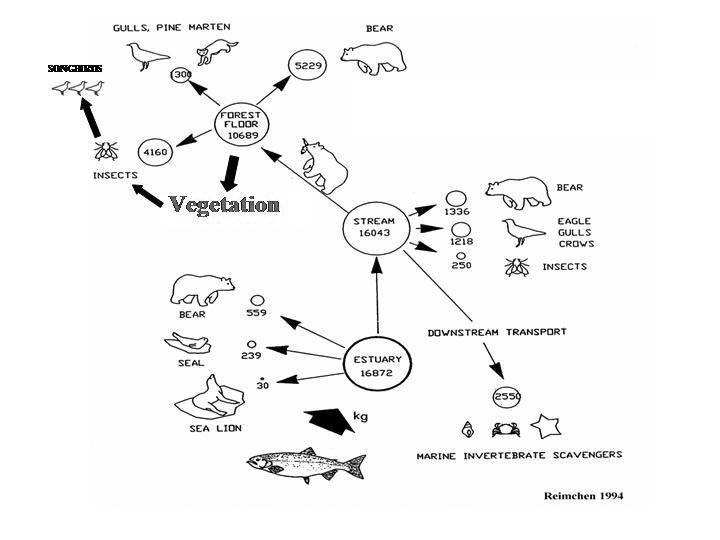
Whales Neared Extinction
Until the Iron Age arrived around 3,000 years ago, humans had only been able to hunt smaller sea creatures using canoes and spears. Iron Age tools gave the ancient Romans an edge to hunt larger whales like gray and right whales possibly to extinction from the Mediterranean Sea ecosystem. Bones found at ancient Roman fish processing sites provide evidence that these whales once inhabited the Mediterranean Sea area.
Whaling increased steadily from the 16th century onward even as it remained a very hazardous pursuit. With the invention of the bow-mounted exploding harpoon in 1864 the entire whaling industry changed drastically. The largest baleen whales could now be harvested. Whale oil and whale products fueled the industrial revolution of the 19th century. Next came the factory ships of the 20th century, bringing commercial whaling into the industrial scale. Scientists estimate that 2.9 million whales were killed for commercial purposes in the 20th century, causing the catastrophic decline of global whale populations. By some estimates, sperm whales were depleted to one-third of their pre-whaling population, and blue whales by up to 90%.
The International Whaling Commission (IWC) was formed in 1946 to provide for the proper conservation of global whale populations. The IWC established various bans on whaling; however, even with whaling bans in place, commercial whale harvesting numbers did not peak until the mid-1970s. This prompted the IWC in 1982 to place a global moratorium on all whale species in 1986, with an exemption for scientific study and Indigenous whaling as a traditional food source.
However, the IWC lacks any enforcement powers over whaling as membership is voluntary. Canada had already prohibited commercial whaling from all Canadian ports in 1972, but left the IWC in 1982 in order to formally recognize Inuit treaty rights to hunt whales. Countries that have resumed commercial whaling outside of the IWC moratorium are Japan, Norway-Faroe Islands, and Iceland. At the same time, markets for whale meat are shrinking as people become more aware of the whaling impacts on the global environment.
Recovery of Whale Populations
Whale recovery monitoring data collected since the 1990s shows that recovery has varied widely. Some populations have grown, some are experiencing new declines, and many remained endangered. A main factor implicated in slow whale population recovery is a lack of food. The whale food supply has been hit by pollution, climate change, and competition with human commercial fisheries.
The most productive ecosystems for krill are at the polar ice edges where the mix of cold and warm waters causes nutrients to circulate rapidly. Ice shifts have caused less nutrient circulation through the water columns, reducing food web production. Other factors include human commercial fisheries depleting krill, salmon, and oily forage fish populations leaving the food webs to starve.
The Whale Pump Has Slowed
Recovering from disruptions to the whale nutrient pumping cycle can take decades. Scientific measurements demonstrate a slowing of the whale pump due to whaling activity. Phytoplankton biomass has reduced in volume causing a two-fold effect: lower grazing volumes, and a contributing factor in climate change.
Marine mammal biologist, Trish Lavery of Flinders University, Australia, calculated how much atmospheric carbon was being removed by just one whale species, sperm whales, whose poop fertilizes phytoplankton in the southern oceans. The Southern Ocean was once home to over 120,000 sperm whales. “If we hadn’t removed them,” she says, “we’d have an extra two million tonnes of carbon being removed out of our atmosphere every year.”
Lower phytoplankton grazing volumes for foraging critters restricts food for fisheries worldwide. The Food and Agriculture Organization (FAO) of the United Nations monitors 600 marine fish stocks. Findings show that the majority of global commercial fish stocks are already fully exploited, over exploited, or depleted.
FAO lists five Pacific West Coast fisheries, Chinook salmon, Coho salmon, North Pacific hake, and Pacific herring as being moderately exploited to overexploited, and other shrimps ranging from fully exploited to depleted. There are many reasons for the decline in salmon populations: stream destruction, dams, pollution, disease, overfishing, and the amount of food that is available to salmon in the ocean. An article published in Nature reported recent declines in salmon body size due to lack of food in the oceans and the further impacts to land ecosystems receiving less nutrients from the oceans.
Fish meal and fish oils derived from ocean fish are allowed in the 2018 Organic production systems standard – Permitted substances list for aquaculture (CAN/CGSB-32.312-2018). Fish fertilizers are allowed in crop production. The most harvested species caught for fish meal, fish oil, and fertilizer products, in North American waters is menhaden. Menhaden is a small oily fish that forages on phytoplankton.
Menhaden are a keystone food species for the entire Atlantic food web, sustaining fish, whales, and seals. The menhaden fishery has operated for 150 years, with mature breeding stock in decline in some areas. Even though regulatory bodies keep certifying the fishery as sustainable there are conservationist concerns over poor regulatory controls being in place to protect the menhaden fishery. The vast majority of the menhaden harvest is diverted from the natural food webs into protein meal for penned aquaculture systems and large animal feed.
In less than 200 years of intensive whaling, the oceans’ nutrient cycling whale pump has been disrupted and slowed. The ocean’s food webs continue to decline while whale population recovery lags. Both aquaculture and soil crop production depend, in large part, on ocean protein and mineral resources. The FAO reports that the oceans resources are in critical decline.
There are no simple answers to this problem, so education and awareness are at the heart of real solutions. Hope for the future depends on our collective ability to become effective stewards of our shared global ecosystems and the rich diversity of life that is anchored in the oceans, fertilized by the whales’ nutrient pump.
Marjorie Harris, IOIA VO and concerned organophyte.


